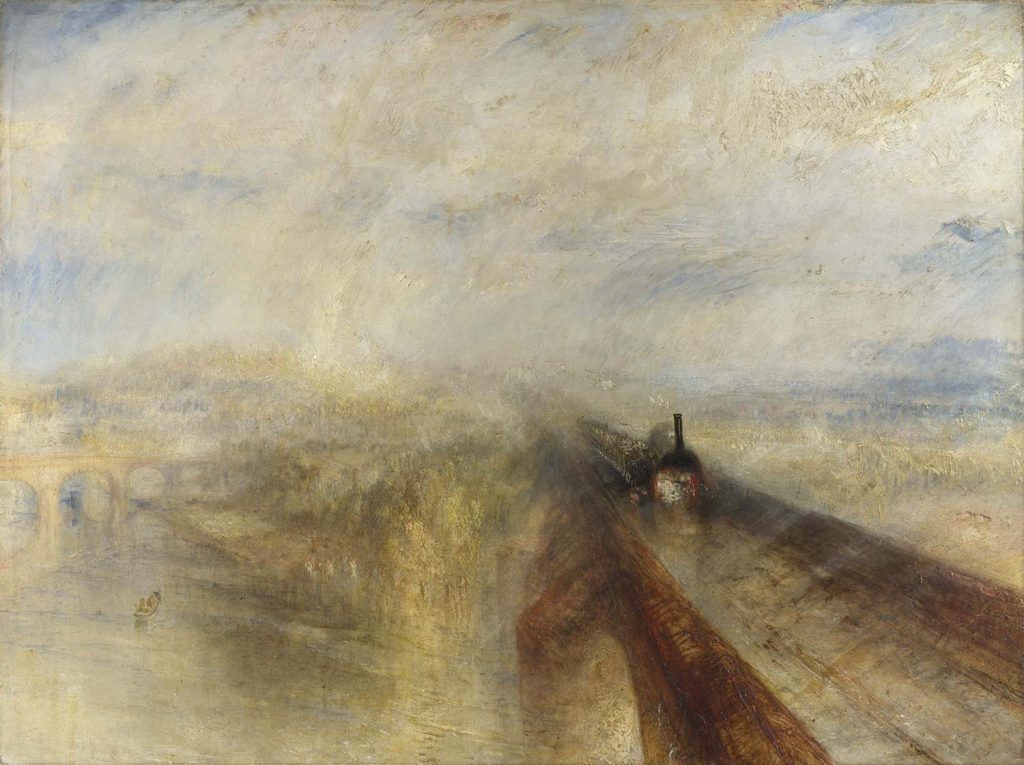
Rain Steam and Speed – The Great Western Railway by Joseph Mallord William Turner was created in 1844. The painting is in National Gallery London. The size of the work is 91 x 121,8 cm and is made of oil on canvas.
About the Work
A steam engine rushes towards us as it speeds along a bridge through the rain. The bridge is the Maidenhead Viaduct, which crosses the Thames between Taplow and Maidenhead on the newly laid Great Western line to Bristol and Exeter. Designed by Isambard Kingdom Brunel, the viaduct was completed In 1838 and in use from July 1839. We are looking east towards London as the train heads towards the west of England. The arched bridge on the left is Taylor’s road bridge, built in the 1770s.
The engine, of the ‘Firefly’ class, pulls a train of unroofed open-goods wagons in which passengers, paying the cheapest rates, could travel. Average engine speed on the Great Western Railway (GWR) in 1844 was 33 mph, but on long level stretches, such as the Maidenhead Viaduct, an unprecedented 60 mph could be reached – faster than any galloping horse.
The 1840s was a period of ‘railway mania’, and by 1844 the GWR had already constructed over 100 miles of line, which Turner could have travelled on during the previous six or seven years. We cannot be certain if this picture was inspired by a recent journey, or if he had travelled on this stretch of track. However, in an account told to the critic John Ruskin, Jane O’Meara (later Mrs John Smith) related how, as a young woman aged eighteen, she had been travelling to London on that line during a stormy night in June 1843.
A fellow passenger – ‘with the most wonderful eyes’ – had leaned out of the train window for almost ten minutes when the train had come to a halt at Bristol during the storm. On seeing Rain, Steam and Speed at the Royal Academy, she claimed the passenger must have been Turner. Read more in National Gallery London
About the Artist
Joseph Mallord William Turner RA (23 April 1775 – 19 December 1851), known in his time as William Turner, was an English Romantic painter, printmaker and watercolourist. He is known for his expressive colouring, imaginative landscapes and turbulent, often violent marine paintings. His artistic style developed over his lifetime, moving away from Romanticism — bypassing the following rising style of Realism — and, instead, with his later works being a significant precursor of and presaging the later Impressionist and Abstract Art movements that arose in the decades after his death.[1] He left behind more than 550 oil paintings, 2,000 watercolours, and 30,000 works on paper. He was championed by the leading English art critic John Ruskin from 1840, and is today regarded as having elevated landscape painting to an eminence rivaling history painting. Read more in Wikipedia
Order a reproduction of this work (printed on canvas)
